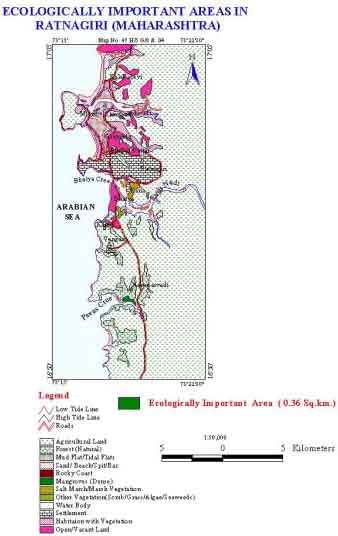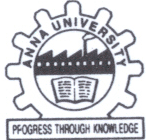Historical
Importance:
Maharaja Bhoj built Ratnadurg
fort. The Ratnadurg fort, Bhagwati Bandar port and Bhagwati Devi temple are the
famous historical sites in Ratnagiri. The Ratnadurg fort was partly demolished
and the land was reclaimed to build Bhagwati Bandar port some 20 to 25 years ago.

Ecological
Importance:
The growth of Ipomea
biloba was extensive on the sand
dunes near the shore. Cyanodon
dactylon , a graminae member was also found growing luxuriously
along with Ipomea
biloba. Casuarina
equisitifolia plantation is also seen along the white
sea beach.
Fauna:
Birds
in the estuary include egrets,
herons, sandpipers, plovers, oyster catchers, kingfishers, lapwings, stilts
and moorhens.
Fish species include Ambasis
Gumnocephalus, Batrachus grunniens, Caranx boops, Chateossus nasus, Chorinemus
toloo, Chrysophrys haffara, Echeneis naucratus, Equula dussumieri, E.fasciata,
Gerres poeti, Gobius criniger, Hippocampus guttulatus, Mugil carinatus, Platycephalus
macracanthus, Naucratus doctor, and
Sardinella melanura.
Flora:
Woody mangroves cover the area. The dominant species are Rhizophora
mucronata, R.apiculata, Sonneratia alba, Avicennia officinalis, A.marina, Ceriops
tagal, Aegiceras corniculatum, and Excoecaria
agallocha. The subdominants are: Bruguiera
gymnorrhiza, Kandelia candel, Lumnitzera racemosa, and Derris
heterophylla. Acanthus
ilicifolius helps as a biomonitor of sewage pollution. Rhizophora
apiculata is
found only along Bhatye estuary (Kajvi river). There are a total of 28 mangrove
species, including mangrove associates.
Economical Importance:
Fishing
is the main economical activity. Ratnagiri is an important fishing center. Extensive
fishing activities are carried out along the coast up to 65 km from the coast
during nine months from September to May.
Coastal Protection Measures:
Plantation
and re-plantation of Casuarina
equisitifolia is one of noticeable coastal protection measures taken
here.
Nature of ecosystem:
Ratnagiri
has a sandy coast. It has white sea beach with sand dunes and black sea beach
without sand dunes. The coast is rocky near Ratnadurg Fort.
Shore line
changes:
No changes within 10 km distance
along the shore. The sea level changes are negligible.
Industries:
Narmada
cement factory, Naik Ice and cold storage plant, Finolex (PVC) plant and fish
crushing plant are some of the noted industries in coastal zone. The conveyor
belt of Narmada cement factory is installed near the Bhagwati Bandar Port. Power
plants are absent.
Waterways(rivers /estuaries):
Mirya
creek (white sea) with mangrove and Rajivda creek (black sea) acts as waterways
for barges, launches and boats. Lakes, estuaries, backwaters are absent.
Population:
As
per 1991 census, the population of Ratnagiri is 56,529. Literates are more in
men than in Women.
Tourism:
Beaches,
Bhagwati temple, Ratnadurg Fort, Beach resort at Rajivda creek are some of the
tourism related sites. Contact sports are not present here.
Pollution:
The
estimated quantity of domestic sewage from point and non-point sources is 3600
m3/d. Nearly 3028 m3/d of industrial organic wastes are discharged. There is no
solid waste disposal. The fish crushing plant discharges waste water into the
open sea.



